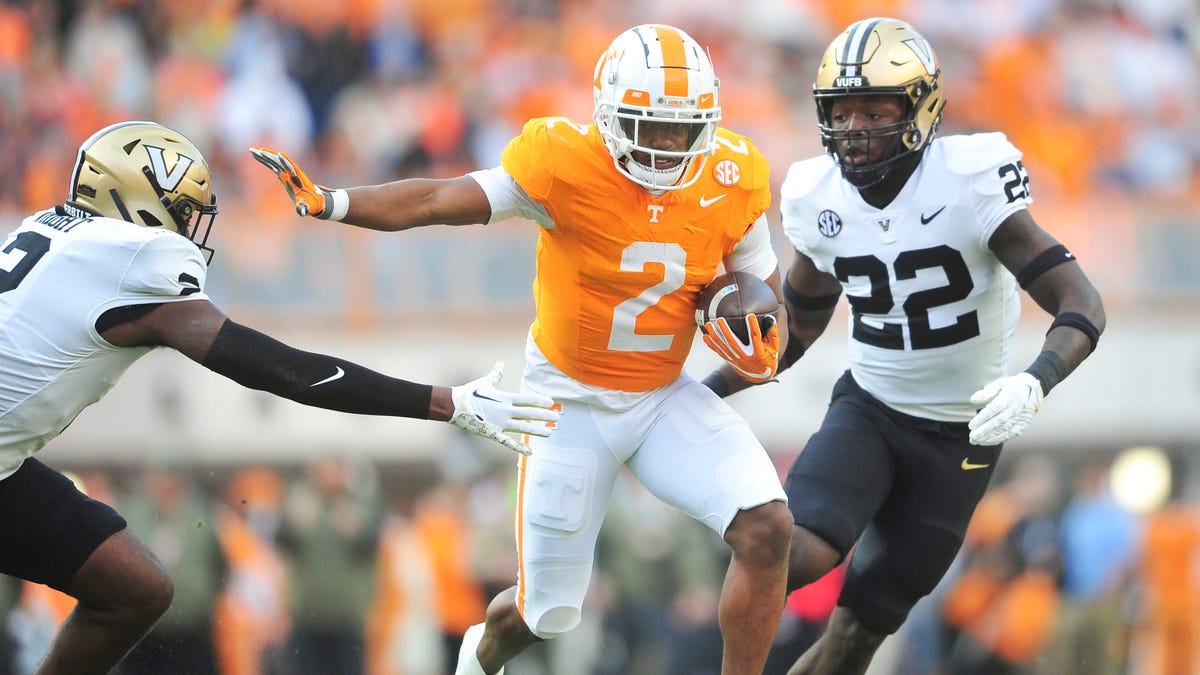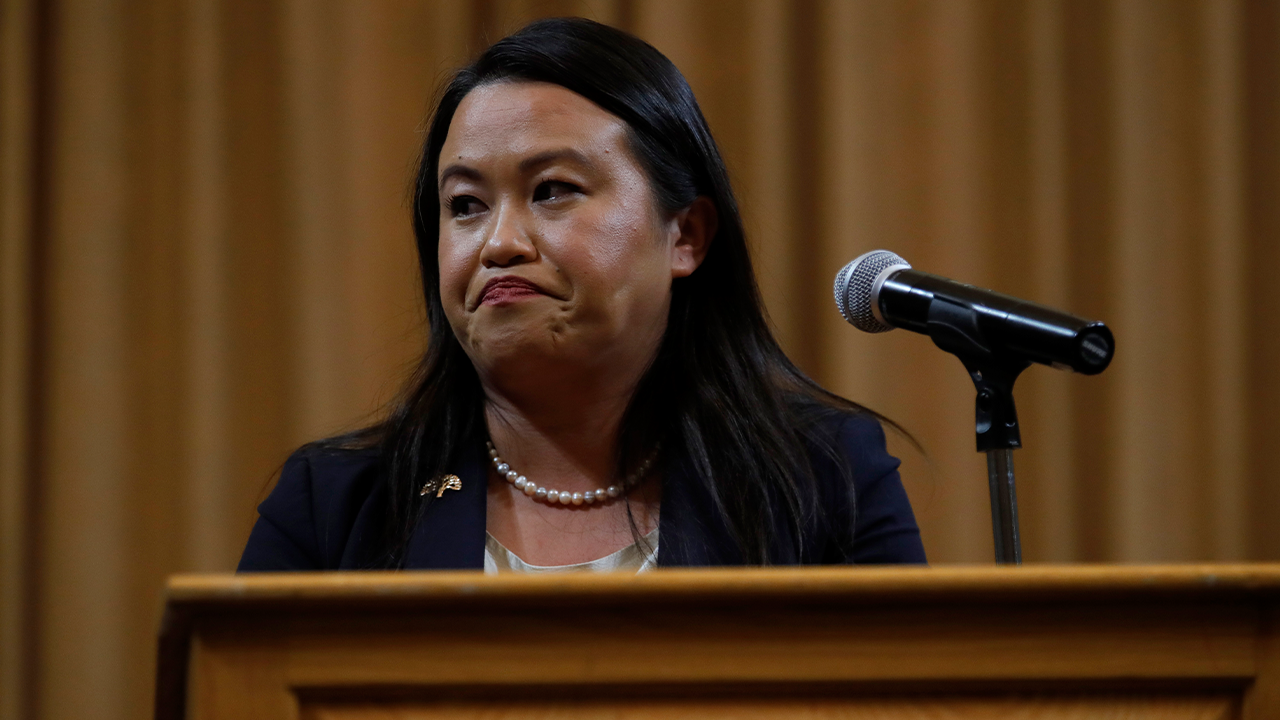Realignment, as we keep finding out, is not a permanent thing. We thought in May that the chessboard was going to remain relatively stable for the next few years until the new College Football Playoff television rights deal was negotiated for the 2026 season and beyond.
San Diego State and SMU joining the Pac-12 were viewed two months ago as possible realignment moves, but that was going to be it. The Pac-12 would have stayed intact, but the other Power Five conferences would not have been reshaped at all. Everything seemed quiet … and then Colorado bolted for the Big 12.
All heck broke loose.
The Pac-12 abruptly splintered and was reduced to the rubble of the Pac-4. The Big 12 grew to 16 schools, the Big Ten to 18 just days after commissioner Tony Petitti said his focus was only on getting USC and UCLA smoothly integrated into the conference.
Permanence is not part of the reality in realignment. Therefore, while a lot of different scenarios simply aren’t going to happen right now, they could happen in a few years. The idea that the chessboard is fixed just doesn’t hold water. By the end of this decade (the 2020s), it’s hard to see the ACC retaining all of the schools which are currently part of the conference. There is bound to be at least one defection if not more from the ACC. That would likely cause more defections and/or changes in the landscape.
It is worth looking at various conference and school changes which, if made, would make college sports so much better and would serve the interests of a lot of schools, not to mention fans and media. These changes aren’t going to happen in the next few years (or so we think), but it’s still worth mentioning them.
Let’s start with the ACC, since that conference is the most likely to undergo changes within the next five years:
Mar 18, 2023; Birmingham. Mandatory Credit: Gary Cosby Jr.-Tuscaloosa News
If you were to pick a realignment scenario which could snap the national map back into place and restore the “natural order” of how schools and conferences should be aligned, you could obviously start with USC and UCLA going back to the Pac-12, but the Pac-12 is basically dead. If it survives, it will survive in a very narrow and technical sense. Its identity as a collection of prominent West Coast schools is done, finished, kaput. Its future — if it has one at all — will be as a zombie conference reconstituted with the spare parts of the Mountain West and/or the AAC. There’s no going back for USC, at least not for the next decade or so. Maybe in the late 2030s, everyone will want to bring the band back together after having an ugly and unsatisfying experience.
In terms of things which might happen in five years as opposed to 12 or 15, a Maryland return to the ACC is at the top of interesting realignment scenarios. It’s not going to happen in the next two years, but maybe at the end of the decade the stirrings could be significant enough to produce change.
If Maryland did return to the ACC, the obvious first benefit is that Maryland-Duke and Maryland-North Carolina basketball would be back in our lives.
Beyond that clear improvement, though — and much more relevant to other schools’ realignment interests — a Maryland exit from the Big Ten presumably opens up a lane for Stanford or Florida State to occupy that vacated slot.
If you were to tell the Big Ten presidents and chancellors they could have Stanford instead of Maryland, how many of them would say no?

Nov 12, 2022; Clemson. Mandatory Credit: Ken Ruinard-USA TODAY Sports
Clemson has an SEC football culture and SEC football results. It isn’t in the SEC, however. Clemson is an “It Just Means More” football program. The school spares no expense and is all-in on football success.
Clemson leaving the ACC would also give Florida State (should it not be welcomed by the Big Ten) more of a chance to annually make the College Football Playoff as ACC champion.
Consider the idea, too, that the ACC brings in Maryland and loses Clemson. The ACC would lose out in football, but if one Power Five conference really does care about basketball success more than (or at least equal to) football success, the ACC is it. This wouldn’t be a psychic blow to a conference or region in the same way USC leaving the Pac-12 was.

USA TODAY Sports
I know Florida State fans want the Big Ten, but the SEC is a natural cultural fit on so many levels. It would also mean less travel for FSU athletes. It’s an obvious fit, even if the Big Ten is what the folks in Tallahassee truly want.

Jan 1, 1991; Dallas. Mandatory Credit: RVR Photos-USA TODAY Sports
The basic dynamics which apply to Clemson and Florida State also apply to Miami. It would just seem right — it would fit and make sense — if Miami football played in the SEC. It doesn’t mean it will happen, but it would be a natural football fit for The U. It would also mean less travel compared to the Big Ten (and, for that matter, the current ACC with its long northern road trips to Boston College, Syracuse, and Pittsburgh).

Dec 30, 2022; El Paso. Mandatory Credit: Ivan Pierre Aguirre-USA TODAY Sports
If Penn State is in the Big Ten — an ostensibly Midwestern conference — shouldn’t Pitt, which is to the west of Penn State on a map, also be in the Big Ten? Wouldn’t Pitt fans love the Big Ten, and wouldn’t Big Ten fans in Michigan and Ohio enjoy going to Pittsburgh for short road trip?

Sep 1, 2022; Pittsburgh. Mandatory Credit: Charles LeClaire-USA TODAY Sports
West Virginia commuting to Boston College, Syracuse, and Pittsburgh for ACC games makes a whole lot more sense than most of the commutes the Mountaineers make for Big 12 road games.

Oct 5, 2019; Dallas. Mandatory Credit: Timothy Flores-USA TODAY Sports
If West Virginia left the Big 12 for the ACC and SMU entered the Big 12, the Big 12 would look even more like the old Southwest Conference, which died so that the Big 12 could be born with a mixture of SWC teams and Big Eight teams.

Oct 16, 2021; Columbia. Mandatory Credit: Jay Biggerstaff-USA TODAY Sports
Missouri in the Big 12, playing Kansas and other natural geographical rivals, is still a great idea, much like Maryland going back to the ACC. Let’s revisit this idea, shall we?

Jan 1, 1972; Miami. Mandatory Credit: Malcolm Emmons-USA TODAY Sports
Nebraska left the Big 12 because it was sick and tired of Texas throwing its weight around and essentially determining the terms and conditions of nearly everything which happened in — and to — the conference.
Guess what? Texas won’t be in the Big 12 in 2024. Come home, Nebraska. You would fit in well, and Matt Rhule could rule the conference and get you into the playoff. Good luck doing that in the 2024 Big Ten with Michigan, Ohio State, and USC all blocking the doorway.

Nov 27, 2021; Tempe, Arizona. Mandatory Credit: Mark J. Rebilas-USA TODAY Sports
What if we imagined realignment as more than just a matter of individual schools trading places? What if we thought about creating a new geographical map? Chew on that question for a minute and then read the next slide below:
Sad day in college football
Surreal to see the Pac-12 join the conference graveyard with the Southwest Conference, Big 8, Big East, etc
NO ONE on the East Coast logged more Pac-12 Networks hours than me — I loved it pic.twitter.com/D1CAjFj4LZ
— Pick Six Previews (@PickSixPreviews) August 4, 2023
What if college sports completely reimagined itself and brought back some of the old conferences such as the Southwest Conference, which died in 1996 and gave way to the Big 12?
Imagine a Southwest Conference with this membership: Arizona, Arizona State, Baylor, Houston, Texas Tech, SMU, TCU, Oklahoma State, BYU, Colorado, Utah, and San Diego State?
We can think big instead of small. Maybe this piece gave you some ideas. We’ll continue to explore them for sure, because we know you’re interested in realignment.
































